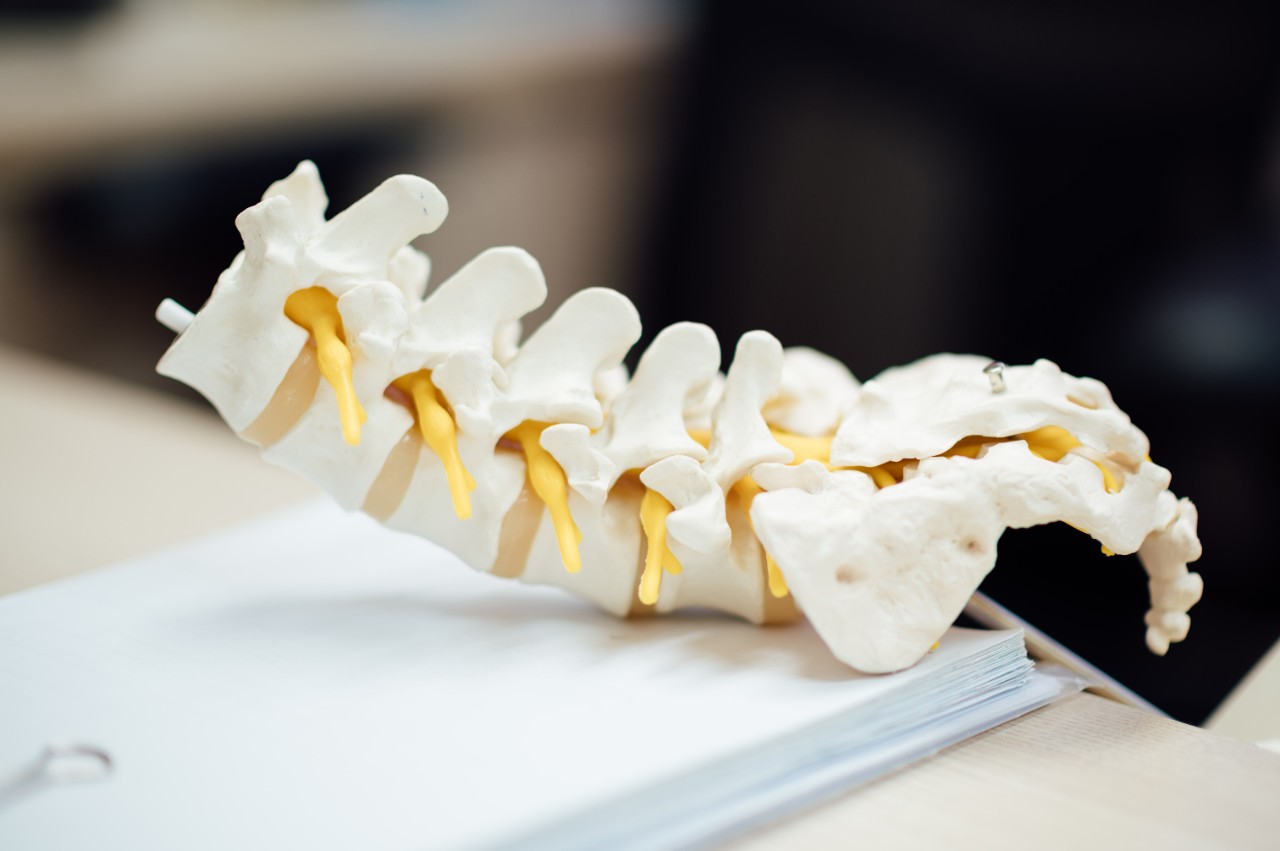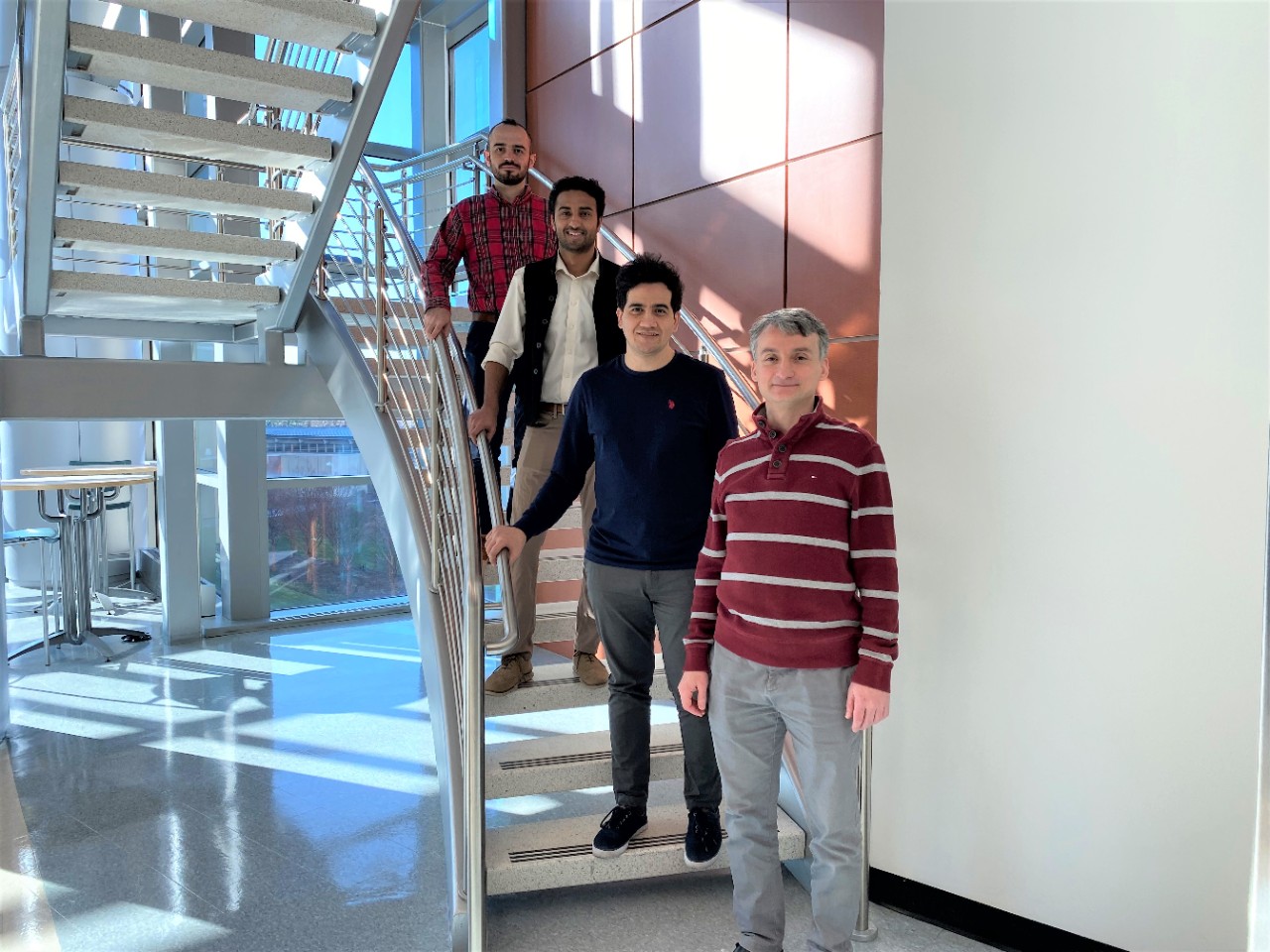
UC researchers reengineer segmentation of the spine
A multidisciplinary team of UC students led a major discovery in embryology
How cells shape complex tissues and organs during embryo development, which makes us what we are, has many mysteries.
New research from the University of Cincinnati has examined one such process which leads to the formation of vertebral column or spinal column. If this process is disrupted, it results in a birth defect called congenital scoliosis, or curvature of the spine. The UC research not only advanced understanding of how complex biological tissues form, but it could also lead to possible treatments for scoliosis in the future.
The research was published in the journal Nature.
“We are studying a basic science problem, the formation of the spinal column, the vertebral backbone that we all have,” says Ertuğrul Özbudak, PhD, professor in the Department of Pediatrics at the UC College of Medicine’s Division of Developmental Biology as well as Cincinnati Children’s Hospital Medical Center and lead author on the study. “By discovering the core mechanism governing it, we are able to reengineer this mechanism in mutant zebrafish which normally lack that process.”
Özbudak says in all vertebrate species, including humans, the spinal column is composed of segmented vertebral discs. Those discs that form the spine originate in embryonic blueprint segments called somites. As the embryo body elongates in all vertebrate species, it is cut into somites by a “biological clock knife.”
“As humans, we all pass through that knife-cutting process thanks to clock genes that express like blades,” says Özbudak. “There is a biological clock controlling this. Each time that clock ticks, the knife comes down and then separates the disc precursors, somites, from the others that will form later on.
“Some genes are part of this clock. When they are mutated, it results in scoliosis because there is no longer a knife that is cutting,” he adds. “By discovering this unknown hierarchy and imitating it with pharmaceutical drugs, we are able to now restore and reengineer that missing segmentation in the mutants which miss the molecular clock.”

From left to right: Muhammed Simsek, Angad Singh Chandel, Didar Saparov and Ertuğrul Özbudak, PhD/Photo/Cincinnati Children's
Özbudak says the four UC students worked on the project and all contributed in different ways, bringing different skills and talents to the research. Chandel Angad Singh, a second-year doctoral student in the systems physiology graduate program, engineered a genetically modified animal model while Didar Saparov, a third-year doctoral student in the molecular and developmental biology graduate program at Cincinnati Children's Hospital, conducted experiments with pharmaceutical drugs. Oriana Zinani, now a doctoral graduate from the molecular and developmental biologyB program, verified the precision of a genetic reporter fish for the molecular clock. Nick Clason, as an undergraduate co-op intern from the computer science department, contributed to the molecular simulations involved in the study.
“They had different backgrounds as undergraduates and they all did research in my lab,” Özbudak says of the students. “They formed a nice multidisciplinary team. In their bachelor’s degree [studies] Didar, Angad and Oriana majored in physics, biomedical engineering and biology, respectively. The team is led by Dr. Muhammed Simsek, a senior postdoctoral fellow in my lab at Cincinnati Children’s Hospital.”
Özbudak says the publication of the research has triggered positive responses from other scientists internationally.
“They are finding this study important and paradigm-shifting. We are hoping it will energize not only our lab members working on this project, but also several labs across the globe,” he says. “In a globalized society, hopefully everyone else will pitch in as well, and researchers from different countries and different universities will take these results and push them forward.
“Collectively, we will have a better understanding of why certain mutations cause diseases and we’ll understand the mechanisms behind it which will one day be helpful in curing congenital scoliosis.”
Lead image/Chuttersnap
Next Lives Here
The University of Cincinnati is classified as a Research 1 institution by the Carnegie Commission and is ranked in the National Science Foundation's Top-35 public research universities. UC's graduate students and faculty investigate problems and innovate solutions with real-world impact. Next Lives Here.
Related Stories
UC researchers reengineer segmentation of the spine
January 11, 2023
How cells shape complex tissues and organs during embryo development, which makes us what we are, has many mysteries. New UC research examines one such process which leads to the formation of vertebral or spinal column.
UC student uses zebrafish to study spinal deformities
January 21, 2021
Oriana Zinani, a doctoral student in molecular developmental biology at the University of Cincinnati, is part of a team of researchers using zebrafish embryos to study a gene mutation that causes scoliosis, a sideways curvature of the spine that typically occurs in humans just before puberty.
UC College of Medicine honors humanism in medical students and faculty
May 20, 2021
Leonard Tow Humanism award winners, Dr. Mia Mallory and Alexandra Schoenberger, are recognized during Honors Day activities at the UC College of Medicine.
Learning more about how cancer affects stroke risk
October 16, 2023
A collaborative team led by University of Cincinnati, University of North Carolina and Duke University researchers is studying how specific cancers and treatments affect patients' risk of stroke.
Head and neck, breast cancer research highlights AACR abstracts
April 14, 2023
University of Cincinnati Cancer Center researchers will present more than a dozen abstracts at the American Association for Cancer Research Annual Meeting 2023, held in Orlando, Florida, April 14-19, including findings that could advance treatments for head and neck and breast cancers.
Research reveals insights into transplant rejection, new drug targets
June 28, 2023
Imagine a day when a urine test could inform a doctor precisely why a kidney transplant patient was experiencing organ rejection and suggest the best medication for specifically addressing the problem. That day took a leap closer to reality thanks to a set of single-cell analyses that have identified the most specific cellular signatures to date for kidney transplant rejection. The findings were published in the Journal of Clinical Investigation.
Navigating epilepsy care from childhood to adulthood
June 22, 2020
Emily Nurre, MD, received a grant from the CCTST to study ways to help pediatric patients with epilepsy best transition to adult care.
UC surprises future Bearcats on Decision Day
January 24, 2022
Decision Day marks the moment when thousands of incoming Bearcats learn they’ve been accepted to the University of Cincinnati. University officials surprised four area high school seniors at their schools and homes, making them among the first to be accepted into UC in 2022.
Before the OR, students get more anatomy practice
March 17, 2021
Charles Prestigiacomo, MD, created the Advanced Anatomy of the Head and Neck elective, offered to fourth-year students at the UC College of Medicine who are getting ready to match in surgical residencies and begin performing procedures on patients. He and colleagues are seeing how this class is better preparing students to begin their careers with a little more “real-life” practice.
Treatment for teen anxiety
August 25, 2020
UC researchers took a first look at one particular medication for treatment of anxiety disorders in pediatric patients to see if it was beneficial.
